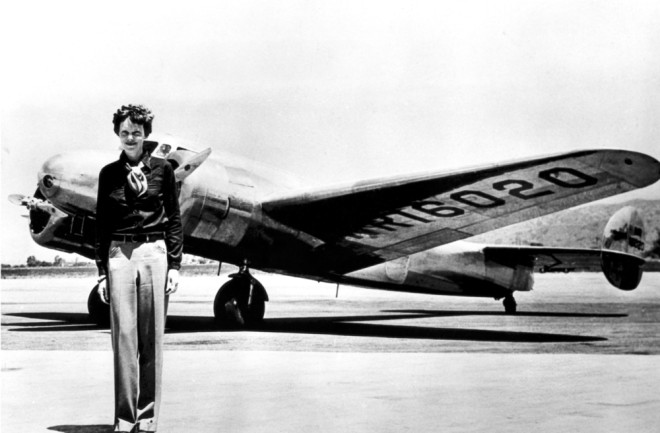On July 2, 1937 distress signals were sent from Amelia Earhart’s aircraft. She had almost made it to Howland Island, an uninhabited lock of land halfway between Hawaii and Australia, but she was low on gas and running out of time. More distress signals followed throughout the day; then the line fell silent. In that moment, Earhart and her navigator Fred Noonan crashed their Lockheed Model 10-E Electra into the Pacific Ocean, never to be seen again.
Ever since, we’ve remained compelled by the mystery surrounding Earhart's death — and with her life in general. Earhart was both an inspiration to aviation as a whole and to women who wished to live outside the societal norms of the time. Last month, she was recognized with a stunning bronze statue on Capitol Hill, a new addition to the National Statuary Hall Collection.
According to Dorothy Cochrane, curator in the aeronautics department at the National Air and Space Museum, the honor comes none too soon. “She was a pioneering female aviator making the first solo flight of a woman across the Atlantic Ocean, but she was also a role model to women showing them that they could do the same things as men,” says Cochrane. “She was willing to get out there on news reels and on radio to engage the public and do what was needed both for aviation and the advancement of women.”
Her Personalty Made Her Wildly Popular
During her life, Earhart was incredibly popular due to her personality, says Cochrane — and that popularity carried on after her untimely death at age 39. Even though she was a private person that wanted to keep many aspects of herself out of the limelight, Earhart was willing to play the game to make her dreams come true. And along the way, people grew to love her. “She had charisma and was media savvy. She was also practical, matter-of-fact and honest,” says Cochrane.
The public liked Earhart for her “midwestern persona.” But at the same time, they were also inspired by her independent thinking. She always knew that she wanted to do something different, and that a traditional life as a wife and mother wasn’t for her. In the early 20th century, there was little to no path for women aviators, and for women in general to have any sort of path outside of the home. But her bravery was what stole the show. “Earhart was tenacious and courageous at a time when most people that took flights across the Atlantic weren’t making it," says Cochrane. "They would either have to be rescued or they would perish at sea.”
The Mystery Behind Her Death
Earhart did eventually perish, like many aviators before her. She went from being an international celebrity to disappearing into the ocean, instantly creating a level of intrigue that’s difficult to match. “Everybody knew she was on a worldwide flight. And then, all of the sudden, she was gone,” says Cochrane.
The public mourned her death, but eventually Earhart receded from the spotlight — until the 1950’s, when people began pushing "alternative theories" around her disappearance, For example, that Earhart and Noonan landed on the Japanese-controlled Marshall Islands, where they were taken hostage as U.S. spies.
Still, Cochrane isn’t convinced. She says there’s no indication that Earhart made it to any other islands and reported sightings of her are a myth. “She was on course for Howland Island where the Coast Guard was receiving strong voice messages from her,” she says.
But she never made it. In the end, the aircraft ran out of fuel and Earhart and Noonan went into the Pacific Ocean with it. Experts suspect that the tragedy was likely the result of a faulty communication system between the Coast Guard and Earhart, part of the reason that the aircraft has never been found.
Still, today people are as fascinated with who Earhart was — and what she represents — as they are with her disappearance, and that’s why she remains an important figure. “She was someone who followed her dreams and was able to make something of herself as a result," says Cochrane. "That makes her a powerful symbol even today."

